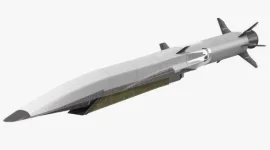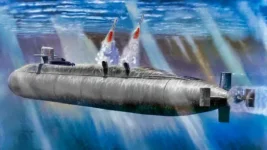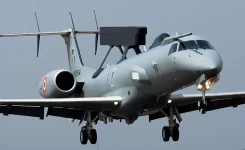- Views: 206
- Replies: 1
India's indigenous long-range air defence system, known as Project Kusha, is making significant progress with the finalisation of two highly specialised canister designs for its missile launchers.
According to recently revealed tender documents, these advanced canisters are engineered to house three different types of interceptor missiles, enhancing the system's operational flexibility and durability.
This development marks a crucial step in India's ambition to create a homegrown air defence shield comparable to world-class systems like Russia’s S-400.
Project Kusha, officially the Extended Range Air Defence System (ERADS), is being developed by the Defence Research and Development Organisation (DRDO). It aims to provide the Indian Air Force (IAF) and Indian Navy with a mobile, long-range surface-to-air missile (SAM) system.
The project, approved by the Cabinet Committee on Security in May 2022, received its Acceptance of Necessity (AoN) in September 2023 for five IAF squadrons at a cost of ₹21,700 crore (approximately US$2.6 billion).
The system is designed to intercept a wide array of aerial threats, including stealth fighters, drones, cruise missiles, and high-speed anti-ship ballistic missiles. To achieve this, Project Kusha will employ three interceptor missile variants: the M1 (150 km range), M2 (250 km range), and the M3 (350–400 km range). With initial trials for the M1 missile scheduled for September 2025, the new canister designs are vital for the system's upcoming deployment.
Canister Type-1: Protection for Tactical Engagements
The first canister type is exclusively designed for the M1 interceptor missile. This missile, intended for engagements with targets like fighter jets and cruise missiles, is reported to have a kill probability of over 80% with a single shot.To ensure the M1 missile's reliability, its canister is equipped with special mechanical dampers and isolators. These components act as shock absorbers, protecting the missile’s sensitive internal parts, such as its dual-pulse rocket motor and warhead, from damage caused by vibrations during transportation and the intense forces of launch.
The canister's compact and lightweight design, likely using materials like fibre-reinforced plastic or aluminium alloys, is optimised for road-mobile launchers, allowing for rapid deployment.
Canister Type-2: A Versatile Design for Long-Range Interceptors
The second canister design showcases a more versatile and innovative approach, built to carry both the M2 (250 km) and M3 (350-400 km) missiles. These longer-range interceptors are tasked with neutralising high-value targets like airborne command posts (AWACS) and powerful ballistic missiles.Constructed from advanced composite materials for a balance of strength and reduced weight, this canister’s standout feature is an adjustable sliding mechanism.
Since the M2 and M3 missiles use boosters of different lengths, their weight distribution and centre of gravity differ. The smart sliding format allows the internal supports of the canister to be repositioned to securely accommodate either missile, ensuring stability and launch precision.
This innovative design eliminates the need for two separate canister types, which simplifies logistics, reduces production costs, and increases operational flexibility for armed forces. The canister interior is also lined with rubber or felt for extra cushioning.
Strengthening India's Air Defence Network
The Indian Air Force will be the primary operator of Project Kusha, with plans to deploy eight squadrons between 2028 and 2030.The system will be fully integrated into the IAF's Integrated Air Command and Control System (IACCS), a centralised network that combines inputs from various radars, including the long-range surveillance radars acquired with the S-400 system.
This integration will provide a comprehensive picture of the airspace, enabling robust detection and engagement of threats.
Furthermore, the Indian Navy plans to equip its next-generation warships with the M1 and M2 missile variants, significantly boosting maritime air defence capabilities against threats like China’s DF-21D "carrier-killer" missile.
The advanced engineering of the Project Kusha system and its sophisticated canister technology represents a major leap forward in India's journey toward self-reliance in critical defence technology.








